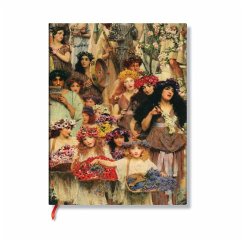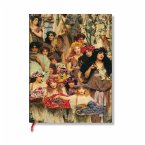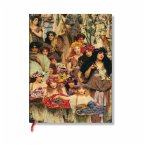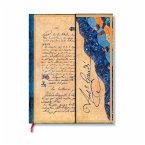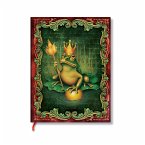In his Spring painting (1894), Lawrence Alma-Tadema represented the Victorian custom of sending children to collect flowers on the morning of May 1, or May Day. By placing the scene in ancient Rome, he suggested the festival's great antiquity through architectural details, dress, sculpture and musical instruments based on Roman originals. Alma-Tadema's curiosity about the ancient world was insatiable, and he incorporated his knowledge into over 300 paintings of ancient archaeological and architectural design. We are honoured to feature a detail from Spring as part of our collaborative The J. Paul Getty Museum Collection. * Format: Midi * Size: Width: 120mm (4¿") x Height: 180mm (7") x Depth: 18mm (¿") * Interior: Unlined * Page Count: 144Pages * Closure: Elastic Band * Colour: Multi-colour * GSM (paper weight): 120 * Binding Type: Smyth Sewn * Cover: Hardcover * Edge Printing: No * Pouch Type: Memento Pouch * Interior Paper: Custom-designed laid paper * Ribbon Markers: 1 * 100% recycled binder boards * Decorative printed cover paper * FSC-certified text paper * Threaded stitching and glue, as needed * Acid-free sustainable forest paper
Bitte wählen Sie Ihr Anliegen aus.
Rechnungen
Retourenschein anfordern
Bestellstatus
Storno

